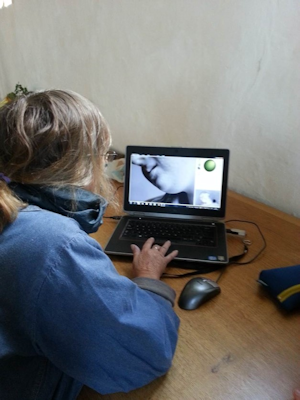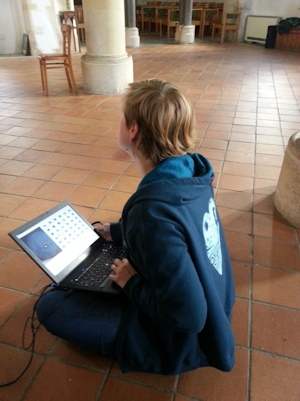
On viewing the initial set of RTIs of the face of the effigy, we questioned whether these were accidental marks that were the result of the statue's biographical journey or whether they might have been caused by geological processes, such as spalling, which may have damaged the marble fabric. Polished marble is resistant to moisture but not acidic water or rising damp infused with salt; salt, of course, in this area is very commonly wind-borne over the Downs from Chichester Harbour and the Solent. Modern air pollution, freeze-thawing, proximity to metals such as those that might be found in a vault with its lead coffins, high humidity and microbial fungi can all cause marble to stain, lose its polish, crack or crumble and also to spall - so were these cavities natural spall marks developed while the tomb was placed in the vault (US General Services Administration 2012; Tymon 2012, 1-6)? On the other hand, might they have been blemishes deliberately inflicted after the effigy's establishment in the chancel. Or were they possibly the secondary consequences of a finishing process that originated in Bushnell's studio?

As part of the iterative interpretation of the tomb, results were processed and PTMs were viewed and discussed by the team as an ongoing analysis, with this question as a major motivator for recording angles and areas of focus of the PTMs. Figures 13 and 14 illustrate this procedure.

The team agreed provisionally that the results seemed to point towards deliberate marking of the effigy. It was difficult in the initial results to identify superimposition, depth, or angle of the markings.
Internet Archaeology is an open access journal based in the Department of Archaeology, University of York. Except where otherwise noted, content from this work may be used under the terms of the Creative Commons Attribution 3.0 (CC BY) Unported licence, which permits unrestricted use, distribution, and reproduction in any medium, provided that attribution to the author(s), the title of the work, the Internet Archaeology journal and the relevant URL/DOI are given.
Terms and Conditions | Legal Statements | Privacy Policy | Cookies Policy | Citing Internet Archaeology
Internet Archaeology content is preserved for the long term with the Archaeology Data Service. Help sustain and support open access publication by donating to our Open Access Archaeology Fund.